The robots are not coming. They’re already here, and they’re starting to unionize with your infrastructure.
This edition lands in a strange moment. Cities are quietly onboarding delivery bots that move 20 miles per hour on public streets. Hospitals are asking AI powered mobile assistants where to redeploy humans. A Norwegian American startup is taking preorders for a five foot six house robot that can fold your laundry and hold a conversation. Nike built a motorized exoskeleton shoe to make your legs more efficient. A Swiss spin out engineered a 35 kilogram underwater drone to handle explosives and port inspections where no diver wants to go.
The scale is historic. Nvidia and Uber want to field a global, Level 4 ready robotaxi fleet. DoorDash is piloting an electric courier, Dot, as a commercial service in Riverside, California. QCraft is rolling an L4 Robobus into Japan. Starship is raising money to flood U.S. cities with thousands of sidewalk couriers after proving itself on European streets and college campuses.
Back in Robotics news September 13 2025, we were still talking about pilots and demos. Now, in Robotics news October 31 2025, we’re watching national industrial policy form around physical AI, and we’re watching the market projection for robotics more than double toward two hundred billion dollars by 2030.
Let’s break down the 15 biggest signals this week.
1. TETHYS ROBOTICS RAISES €3.5M TO TAKE HUMANS OUT OF DANGEROUS UNDERWATER JOBS
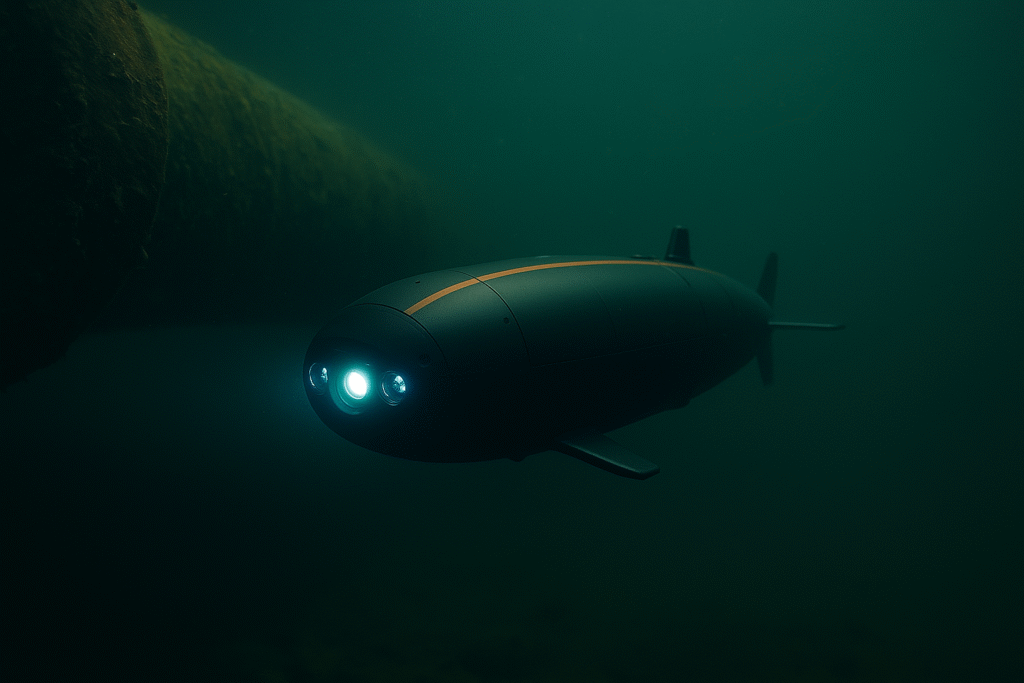
Venture Kick. The company builds Tethys ONE, a compact autonomous underwater robot designed to inspect infrastructure, search wreckage, and even deal with unexploded ordnance in places that are cold, deep, and miserable for human divers. The system can be deployed fast, navigate down to about 300 meters, and run AI driven inspection routines without a diver on a tether.
This is the kind of story that quietly rewires entire industries. Offshore energy, port security, subsea infrastructure maintenance, environmental monitoring, even naval cleanup, all depend on sending people underwater to do precision work in bad conditions. Tethys is betting that autonomy plus strong underwater mobility can turn that work into software. The company says this new funding will go toward scaling the team and globalizing deployments. You’ll see this one again in future Robotics news October 31 2025 style roundups, because subsea automation is becoming strategic infrastructure
2. 1X STARTS TAKING PREORDERS FOR NEO, A HUMANOID HOME ASSISTANT
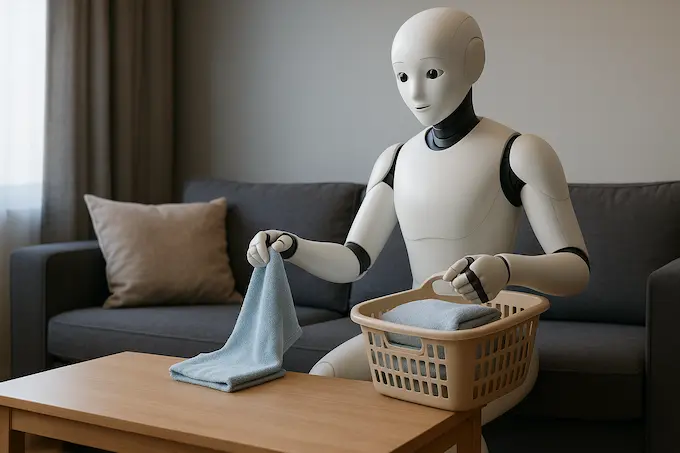
1X, a robotics company with roots in Norway and operations in California, opened preorders for NEO, a humanoid robot meant to live in normal homes. NEO stands roughly 5 foot 6, weighs around 30 kilograms, runs quietly at about 22 decibels, and can lift household loads like laundry baskets. The price is in early Tesla territory, either twenty thousand dollars up front or a monthly plan at four hundred ninety nine dollars, with first U.S. deliveries targeted for 2026 and broader rollout in 2027.
Functionally, NEO is positioned as a general purpose helper, not a novelty demo. It can fold clothes, tidy rooms, flip switches, and respond to natural voice commands. It uses vision, language and memory to personalize help. For harder tasks, vetted remote operators can briefly guide it, which raises new privacy and safety questions that 1X is already trying to get ahead of. The pitch is simple. Physical labor is scarce. Software is abundant. Put the two together and you get a new category, domestic autonomy as a service.
3. BOSTON DYNAMICS AND ANALOG WANT TO GIVE THE UAE ‘PHYSICAL INTELLIGENCE’
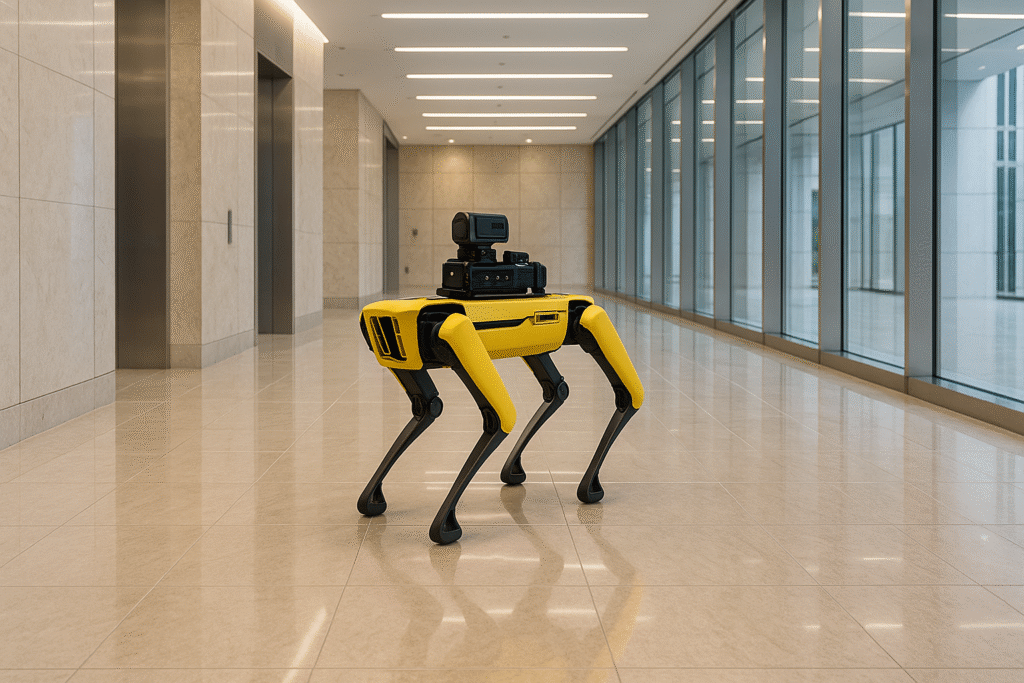
Boston Dynamics is partnering with Analog, an Abu Dhabi based edge AI company, to deploy Spot robots as part of what they call a physical intelligence layer for cities in the United Arab Emirates. The idea is to fuse Boston Dynamics’ mobility and manipulation with Analog’s sensor fusion, shared world modeling, and orchestration stack so robots can perceive space, coordinate with infrastructure, and act in sync with human operators in real time.
This is more than, “Look, a robot dog on patrol.” The partnership frames robots as part of city services, not just factory automation. Think inspection, emergency response support, environmental monitoring, access in hazardous zones, and eventually maintenance tasks in public facilities. Analog calls it an exclusive regional alliance. Boston Dynamics calls it physical intelligence. The UAE calls it modernization. Everyone else should call it a preview of how governments will buy autonomy, as a complete stack, not as a gadget.
4. QCRAFT BRINGS ITS L4 ROBOBUS TO THE JAPAN MOBILITY SHOW
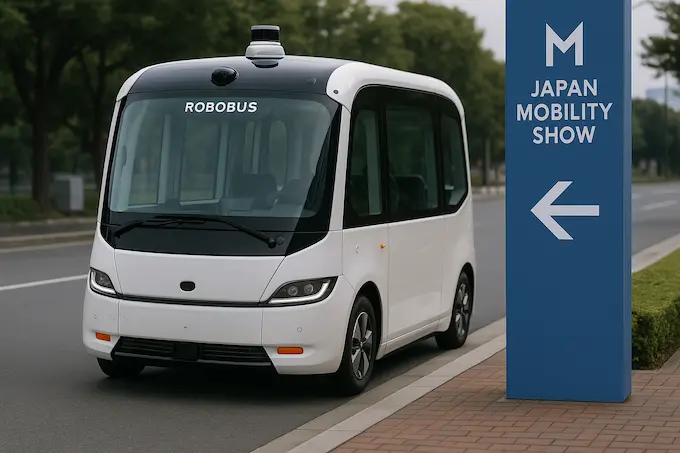
QCraft made its debut at the Japan Mobility Show 2025, the event formerly known as the Tokyo Motor Show, by rolling out its Level 4 Robobus and full stack autonomous driving platform for the Japanese market. The company is not just showing concept art. It’s signaling commercial deployment in Japan, starting with low speed autonomous shuttles meant for structured routes in dense urban areas. The show is running at Tokyo Big Sight from late October into early November.
Robobus is pitched as a public transit layer that scales without hiring more human drivers, a very real constraint in Japan. QCraft is also using this debut to plant a flag in an important export market. Japan has aging demographics, strong public transit expectations, and strict safety culture. If QCraft can clear that bar, it can sell almost anywhere. This is one of the clearest signals in Robotics news October 31 2025 that autonomy is exiting test tracks and entering regulated passenger service.
5. NVIDIA AND UBER PLAN A MASSIVE LEVEL 4 ROBOTAXI NETWORK
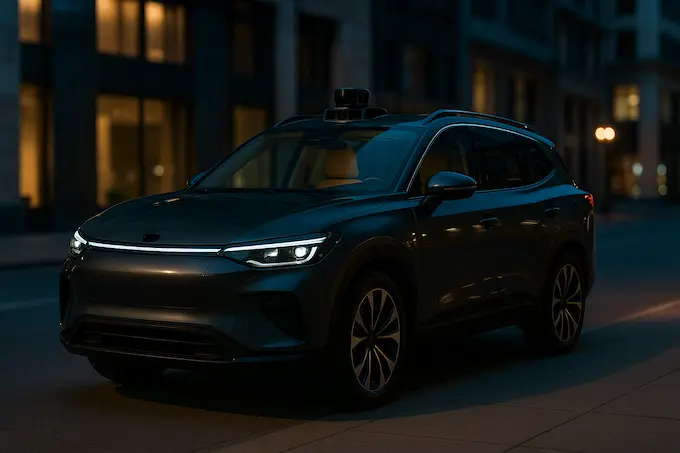
Nvidia and Uber are teaming up on what they describe as the world’s largest Level 4 ready mobility network. Uber brings its global ride hailing footprint. Nvidia contributes its DRIVE AGX Hyperion 10 platform, which includes the DRIVE AGX Thor computing stack, a qualified 360 degree sensor suite, safety certified operating system, and specialized autonomy software. The goal is to scale robotaxis and autonomous delivery fleets into the tens of thousands, with production paths starting in 2027.
Uber is already piloting autonomous rides in places like Saudi Arabia and plans to launch driverless service in the San Francisco Bay Area using electric SUVs adapted for autonomy. Over the next several years, Uber expects thousands of these vehicles, then tens of thousands, across key cities. Nvidia and Uber are also building a shared data pipeline using Nvidia’s Cosmos foundation model platform to accelerate training and validation for self driving systems. This makes robotaxis feel less like science fiction and more like a predictable logistics product.
6. NIKE’S MOTOR POWERED ‘ROBOT SHOE’ TURNS YOUR LEGS INTO ASSISTED ACTUATORS
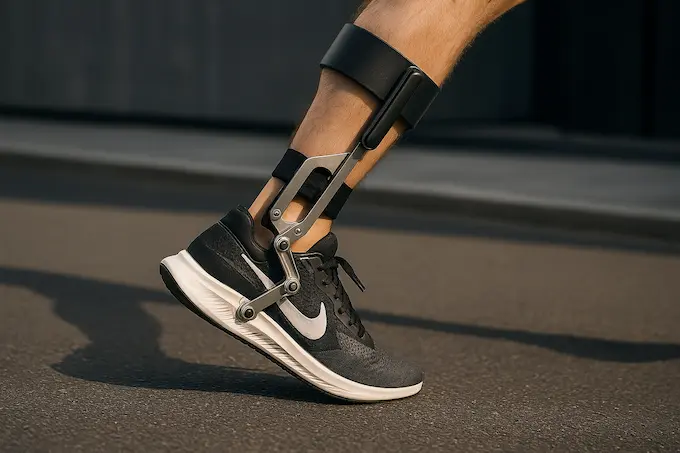
Nike revealed Project Amplify, a powered footwear system co developed with robotics firm Dephy. Think of it as an ankle exoskeleton disguised as a sneaker. There is a lightweight carbon fiber plated shoe, a drive belt with a high torque motor, and a rechargeable cuff battery. The goal is to give you an extra set of calf muscles so you can run faster, walk longer, and climb hills with less strain. Nike says more than four hundred athletes logged over two point four million steps testing prototypes.
This is not just elite performance gear. Nike talks about accessibility, not only speed. The company says Project Amplify aims to make movement easier for regular people, which sounds a lot like the promise of e bikes for walking. Release timing is still in development, but the intent is clear. Robotics has started to merge with consumer sportswear. When we look back at Robotics news October 31 2025, this may read like the moment powered assistance went mainstream outside of rehab labs.
7. AMAZON SHOWS OFF BLUE JAY ROBOTIC ARMS AND ITS NEW AGENTIC AI, PROJECT ELUNA
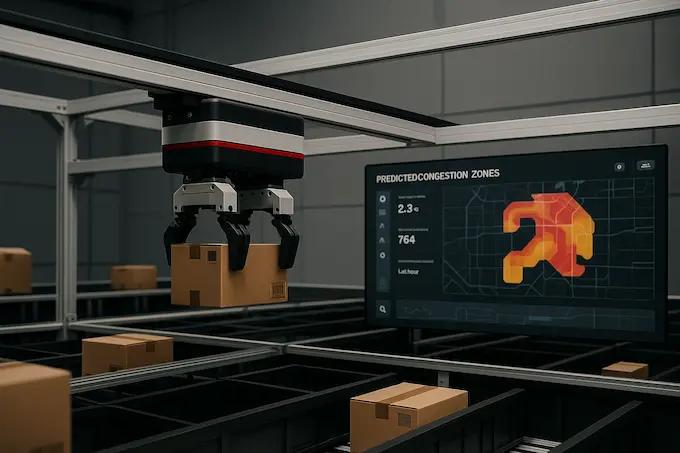
Amazon announced Blue Jay, a ceiling mounted robotic handling system, and Project Eluna, an AI assistant for operations managers. Blue Jay is designed to grab, move, and sort items in crowded fulfillment centers without slowing the human workers on the floor. Eluna sits beside managers like an always awake chief of staff. Instead of digging through dashboards to ask “Where are we about to bottleneck,” a manager can ask Eluna in plain language and get a recommendation on where to move staff before the slowdown hits.
Amazon plans to deploy Eluna in a Tennessee fulfillment site this holiday season for real world sortation optimization. Framed one way, that means “efficiency.” Framed another way, it’s Amazon productizing an AI shift supervisor that reasons over historical and live data, then suggests labor allocation in real time. The company pitches it as an extra teammate, not a foreman in a black box. Either way, this is how agentic AI lands in warehouses first.
8. UNITREE’S ‘DESTINY AWAKENING’ HUMANOID IS BUILT FOR HIGH TORQUE, HIGH AGILITY
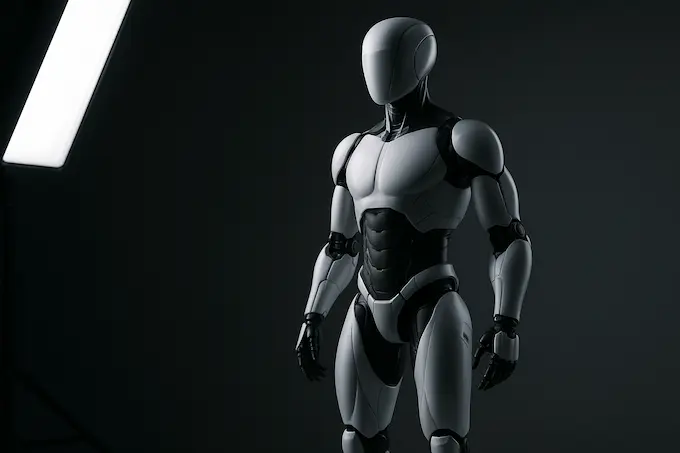
Unitree Robotics introduced what it’s calling the Destiny Awakening class humanoid, also referred to as H2. The robot stands around 182 centimeters, uses high torque joint motors that can deliver roughly 360 newton meters in the legs and 120 newton meters in the arms, and offers 31 degrees of freedom. The head is bionic with humanlike facial structure, and the hands can be swapped for different dexterous grippers. It carries stereo vision, a microphone array, and a high power speaker so it can see, hear, and talk.
Unitree is aiming straight at the “general purpose humanoid” race. The message is less about cute demos and more about mobility, balance, and manipulation under load. The company is clearly signaling that these platforms are getting strong, fast, and cheap enough to leave research labs. Between Unitree, 1X, and Tesla’s Optimus appearances in public, the future factory worker, warehouse temp, night shift guard, and maybe home helper is starting to look bipedal.
9. HORIZON ROBOTICS AND ZF TEAM UP ON COPILOT FOR CHINA’S DRIVER ASSIST MARKET
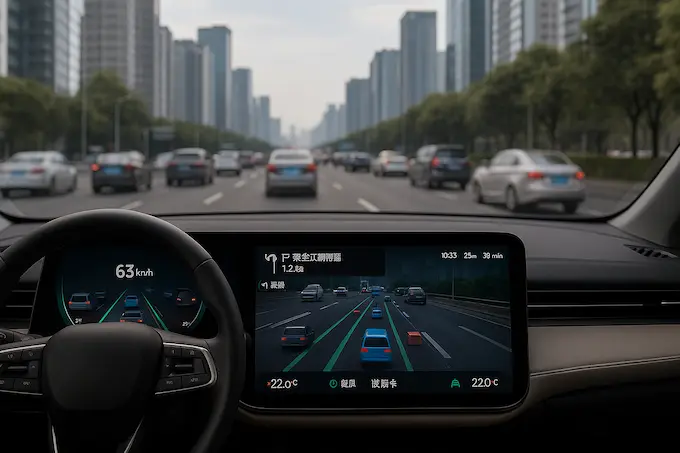
Horizon Robotics has partnered with German automotive supplier ZF to launch coPILOT, a driver assistance platform built for Chinese roads. The system supports city scale Navigate on Autopilot style features and has already secured orders from Chinese automakers, with mass production targeted for 2026. Horizon is providing its smart driving stack. ZF is providing industrial reach and integration into production vehicles. This pairing matters because it brings advanced assistance into mainstream price bands instead of keeping it in luxury imports.
China has become the fastest moving market for high capability driver assist. Horizon also works with Volkswagen’s software arm on localized autonomy features, which shows how seriously legacy carmakers now take in region autonomy talent. This story fits the pattern we keep seeing in Robotics news October 31 2025. The future of driving isn’t just “full self driving” in one leap. It’s incremental autonomy, delivered in production cars, city by city, with safety envelopes the regulators can live with.
10. RICHTECH DEX, A WHEELED HUMANOID FOR REAL FACTORY WORK, NOT YOUTUBE TRICKS
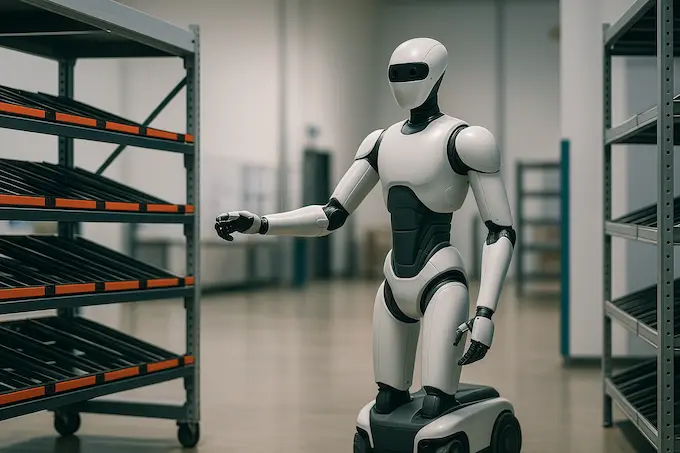
Richtech Robotics has unveiled Dex, a mobile humanoid platform with a wheeled base instead of legs. Dex uses Nvidia Jetson Thor computing, a four camera vision system, and a human torso like upper body that can manipulate objects precisely while staying stable and fast on factory floors. The company describes Dex as industrial first. That means predictable motion, repeatable grabs, and safe operation around line workers, not parkour or backflips.
This design is honest. Wheels are efficient. Humanoid arms are adaptable. You blend them and you get a robot that can take over dull, dirty, repetitive tasks in logistics, hospitality, and light manufacturing without needing to rebuild the whole workspace. Richtech is pitching Dex as “real world work,” which translates to “it does shifts.” In the near term, that approach may win faster than the full biped dream because it meets factories where they already are.
11. NVIDIA FRAMES ‘PHYSICAL AI’ AS A NATIONAL REINDUSTRIALIZATION STRATEGY
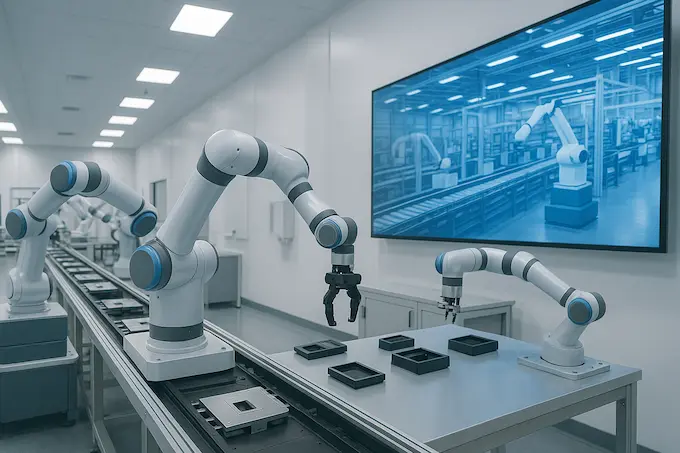
Nvidia is working with U.S. manufacturing and robotics leaders to rebuild domestic industrial capacity using what CEO Jensen Huang calls physical AI. The recipe: AI native factories modeled in Omniverse digital twins, collaborative robots on the floor, and localized chip and supercomputer production. Nvidia says the goal is to boost productivity, resiliency, and competitiveness across the U.S. industrial base while keeping advanced compute and advanced automation onshore.
Parallel to that, Nvidia is partnering with automakers, logistics players, and city scale mobility platforms like Uber to standardize Level 4 autonomy stacks and scale them into production fleets. The subtext is simple. Physical AI is not a demo. It’s a strategy for national competitiveness, complete with U.S. based AI supercomputer manufacturing lines that Nvidia says are intended to reach hundreds of billions of dollars in output over the next four years. This is the industrial layer under Robotics news October 31 2025, and it’s moving fast.
12. ARTIFICIAL MUSCLE LETS HUMANOIDS LIFT THOUSANDS OF TIMES THEIR OWN WEIGHT
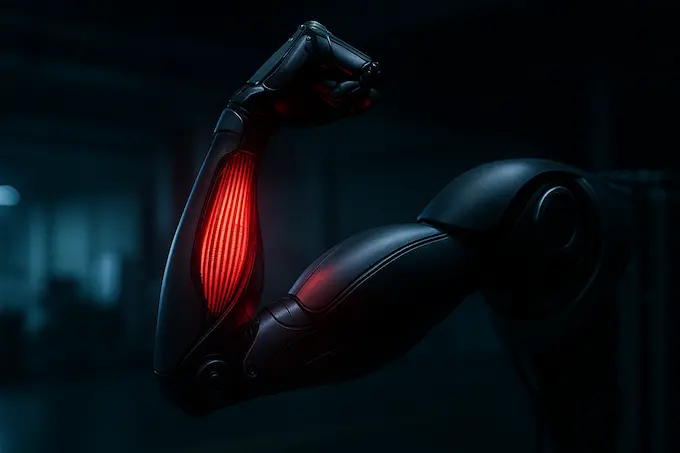
Researchers in South Korea built an artificial muscle that can lift roughly four thousand times its own weight. The muscle is a magnetic composite actuator with a dual cross linking architecture. That structure lets it switch between soft, stretchy behavior and rigid, load bearing stiffness. In lab tests, a sample weighing about one gram supported around five kilograms, which is extreme work density for a soft actuator. The work was published in the journal Advanced Functional Materials on September 7.
Why this matters. Humanoid robots today either lift meaningfully or move gracefully, rarely both. These new muscles hit 86 percent strain, more than twice human muscle, and still deliver high force, which is a problem nobody had convincingly solved. If this approach scales and survives harsh duty cycles, it removes a huge blocker for next generation assistive exosuits, manufacturing cobots that can safely grab heavy parts, and legged robots that don’t wobble under load.
13. SPACE ROBOTICS MOVES FROM LABS TO THE EDGE OF THE UNKNOWN
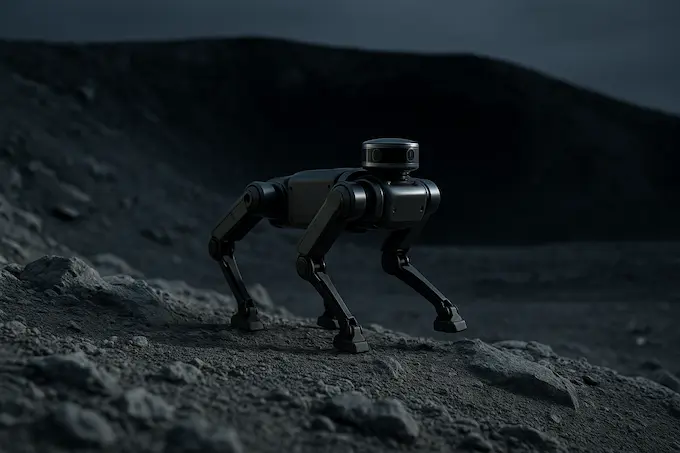
USC’s Department of Astronautical Engineering is refocusing space robotics around autonomy in brutal environments. Think lunar caves, Martian dust storms, icy shadows near permanently dark craters. The program is working on robots that can navigate without GPS, make decisions without constant human input, and survive places we’ve barely mapped. The school describes it as operating at “the edge of the unknown,” which is not poetic branding, it’s a mission requirement once the delay to Earth is measured in minutes.
This is not just rover 2.0. The push now is toward systems that can scout, build, repair, and possibly assemble infrastructure off world. The same logic shows up in terrestrial disaster response and nuclear decommissioning. Space robotics is basically extreme field robotics under a harsher light. When we talk about Robotics news October 31 2025, we’re also talking about who builds, fixes, and maintains assets in places where humans either can’t go or can’t stay long.
14. DOORDASH DOT STARTS AUTONOMOUS DELIVERIES IN RIVERSIDE, CALIFORNIA
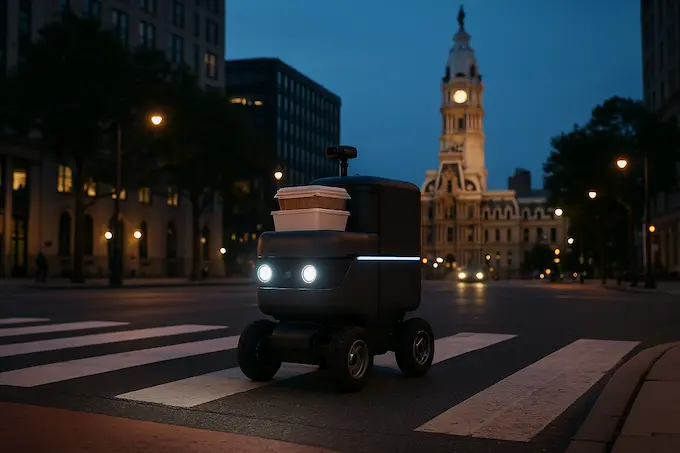
Riverside, California has become a real world test bed for DoorDash Dot, an all electric delivery robot that is about one tenth the size of a car and can reach speeds up to 20 miles per hour. City officials describe Dot as the first commercial autonomous delivery robot to operate on local streets, bike lanes, and sidewalks as part of standard service. DoorDash and the city are exploring an innovation hub around this program, linking automation to local commerce and sustainability goals.
Dot plugs directly into DoorDash’s logistics stack. It is not a science demo with a handler jogging behind it. DoorDash is clear about why this matters. Faster, short range, zero emission delivery improves convenience for residents and margin for restaurants. It also creates a scalable labor buffer for surge hours. Whether residents embrace it will depend on safety, sidewalk etiquette, and whether people actually like a small robot rolling up with hot food.
15. STARSHIP RAISES SERIES C TO BLANKET U.S. CITIES WITH SIDEWALK DELIVERY BOTS
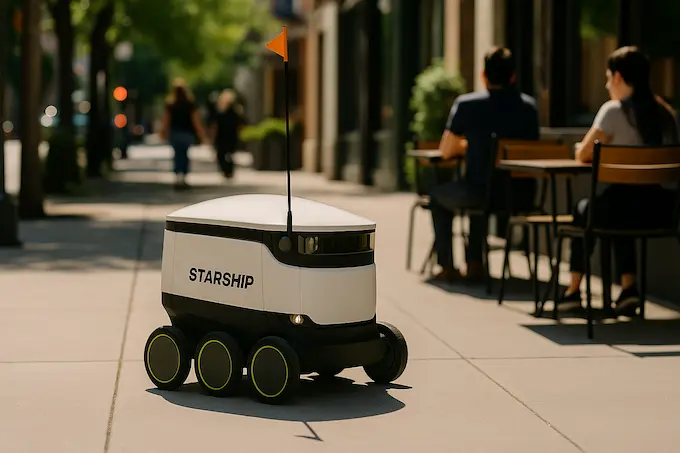
Starship Technologies raised fifty million dollars in Series C funding led by Plural. The company has now raised more than two hundred eighty million dollars total. Management says the cash is aimed at scaling its autonomous delivery robots from college campuses and European neighborhoods into mainstream American cities. Today Starship runs more than two thousand seven hundred robots and has completed over nine million deliveries across about sixty university campuses and dozens of European cities, logging more than twelve million miles.
The pitch now is speed. Starship wants to grow its fleet to more than twelve thousand robots by 2027 and set a new baseline for sub thirty minute local delivery in U.S. urban cores. The company also highlights environmental impact, saying its electric bots have already prevented hundreds of tons of CO₂ emissions in Europe. This is delivery logistics becoming sidewalk infrastructure. It also closes our sweep of Robotics news October 31 2025 with a simple truth. Autonomy at city scale is no longer hypothetical.
WHAT THIS ALL MEANS NEXT
If you zoom out, you can feel a pattern.
Robots are no longer just “a robot.” They’re showing up as infrastructure plays, workforce multipliers, and national strategy. Nvidia talks about physical AI like it’s the backbone of a new industrial economy in the U.S. Abu Dhabi is treating Boston Dynamics Spot as a civic platform. DoorDash is convincing a California city to co design last mile automation policy with them. QCraft is selling transit, not tech. Horizon Robotics and ZF are productizing driver assistance tuned to Chinese streets, not Silicon Valley brochures.
The hardware itself is shifting too. Underwater drones are taking humans out of truly ugly jobs. Artificial muscle research is solving the strength versus flexibility trade off that has haunted humanoids for decades. Nike is quietly normalizing wearable robotics as consumer gear. These trends have nothing to do with hype videos and everything to do with margin, safety, and national leverage.
If you build in this space, it is time to think less about “the robot” and more about the service layer, the policy layer, and the human trust layer around it. Reach out to your city council, your port authority, your hospital COO, your logistics VP. They are already taking calls. Robotics news October 31 2025 is not a future forecast. It is your competitive map.
FAQ
1. Why are humanoid robots suddenly everywhere?
Humanoid form factors, from 1X’s NEO for home support to Unitree’s high torque H2 and Richtech’s wheeled torso worker, solve a simple compatibility problem. Existing spaces, tools, and workflows were built for people. A robot with human style reach, grip, and mobility can slide into those jobs without rebuilding the entire environment. At the same time, breakthroughs in artificial muscle and high torque actuators are closing the gap between “moves like a person” and “lifts like a forklift.”
2. What does ‘physical AI’ mean when Nvidia and Boston Dynamics say it?
Physical AI refers to embodied intelligence. It is AI that perceives the real world, reasons about it, then takes physical action through a robot. Nvidia is pitching physical AI as the core of a re industrialized U.S. manufacturing base, where digital twins plan, collaborative robots execute, and production stays domestic. Boston Dynamics and Analog frame physical intelligence as robots woven into urban services, from inspection to emergency response, inside the UAE.
3. Are delivery robots actually scaling in real cities, or is it just PR?
They are scaling. DoorDash’s Dot robot is running pilot deliveries in Riverside, California in partnership with city leadership, and it is integrated with DoorDash’s own logistics platform. Starship Technologies just raised fifty million dollars in Series C funding to expand from campuses and European streets into major U.S. urban markets, with a target of more than twelve thousand robots by 2027. Robotics news October 31 2025 is not talking about science experiments. It is talking about rollout plans.
4. What is Level 4 autonomy and why does it matter for robotaxis and Robobuses?
Level 4 autonomy means the vehicle can handle all driving tasks within a defined operational domain without human intervention. Nvidia and Uber want to standardize a Level 4 stack and stamp it across Uber’s global network. QCraft’s Robobus is a Level 4 shuttle aimed at structured routes in Japan, where safety, reliability, and labor shortages are major pressure points for public transit.The strategy is not “replace all drivers everywhere.” It is “automate specific, repeatable routes first, then scale.”
5. What frontier still looks truly hard?
Two frontiers stand out. The first is hostile environments, like subsea inspections with explosives risk or lunar style terrain with no GPS and long communication delays. Tethys Robotics is tackling the deep water version with compact autonomous divers, and USC’s space robotics work is doing the off world version with self reliant explorers that can navigate and repair in places no human can safely stay. The second is embodied strength. The artificial muscle breakthrough from South Korea hints at humanoids that can be both gentle and unbelievably strong, which is a prerequisite for truly useful general purpose robots.
Reported by Arqam Aslam for RoboticsNewsAI.
Arqam covers humanoid robotics, autonomous systems, and AI-driven machines entering real-world jobs. He tracks what’s moving from demo video to actual deployment.
Edited by Aslam Ranjha, Editorial Lead at RoboticsNewsAI, responsible for accuracy, sourcing, and ethical review.


